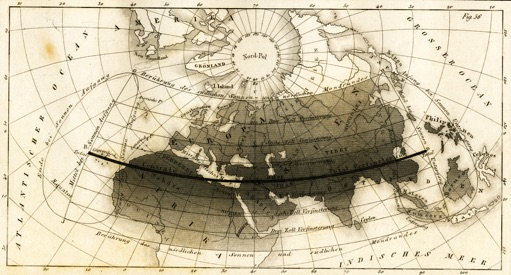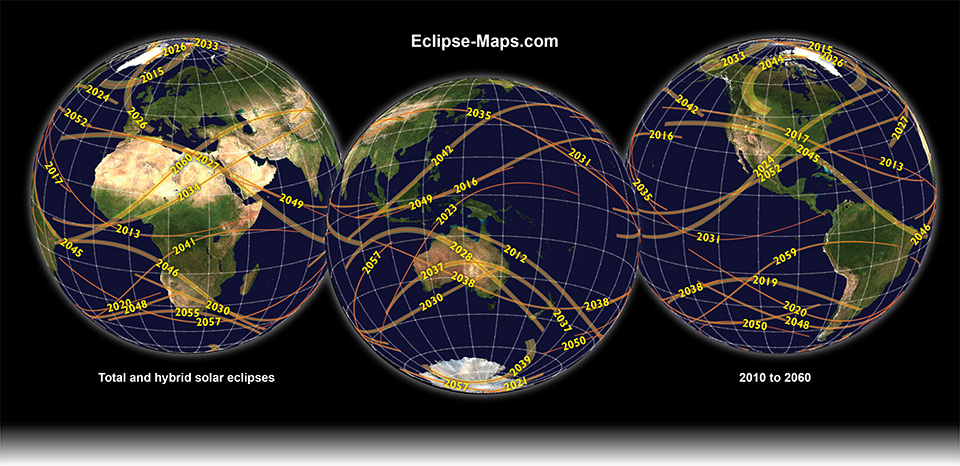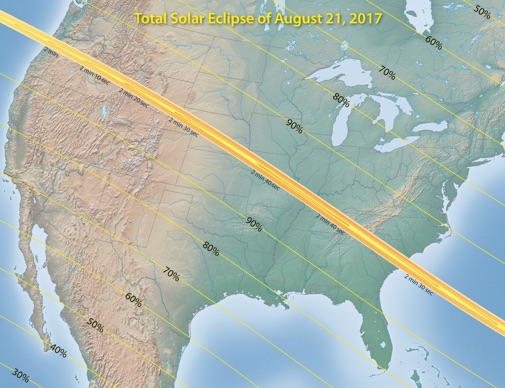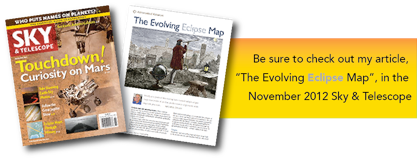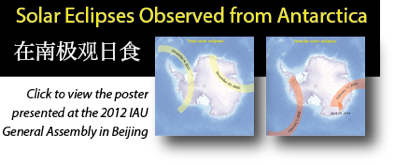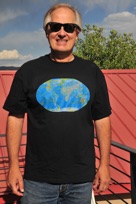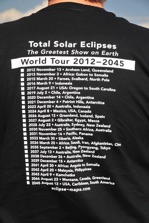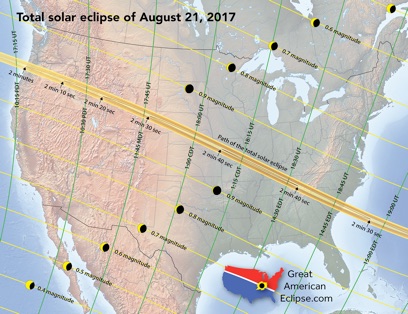This is one of the over 1,100 historical eclipse maps served on this web site. This attractive and informative map was made by Johann Georg Heck in 1846 and documents the total solar eclipse of 1788. What is notable about this map is that it is one of the few eclipse maps to employ cartographic shading to depict the degree of partial eclipse (penumbra) outside the narrow dark path of total eclipse (umbra). This map cleanly depicts the main features of an eclipse including the thin path of totality, the northern and southern limit lines, the curves where the eclipse begins and ends at sunrise and sunset, and isomagnitudes (lines of maximum partial eclipse) at 25% intervals. As appropriate for a map of this scale, the continents and major rivers are shown and labelled along with the graticular network (lines of equal latitude and longitude), the equator, and the north pole. This map employs a stereographic map projection with oblique aspect to encompass the wide extent of a solar eclipse. This map works well because it displays precise and technical data in a clear and appealing manner and invites the map reader to imagine the spectacle of the eclipse from an interesting locale. Even in this era of advanced geographic technology and satellite data, we can learn much about mapping solar eclipses from past masters such as Heck.
Eclipse-Maps.com is also a gallery for new eclipse maps. This overview map of the eclipse of 2017 is one of several hundred new eclipse maps that are being developed with GIS (geographic information system) software applied to millions of eclipse calculations. These maps are made with ArcGIS, the GIS software developed by my employer, Esri (www.esri.com). Any opinions expressed within this web site are my own and the eclipse maps are made during my free time.
Invitation for collaboration
The study of eclipse maps spans many historical eras, technologies, and personalities. Should you have access to interesting eclipse maps, research to contribute, corrections or clarifications, suggestions of topics to explore, requests for new eclipse maps, or comments, please share them through email to eclipsemaps@gmail.com or with comments to the twitter account @EclipseMaps.
There are many open issues in the analysis of historical eclipse maps. I would like to request the assistance of interested eclipse specialists and historians in providing further information and images of maps as outlined in this list of research topics. All contributions will be acknowledged.
Sources of historical maps
The historical eclipse maps on Eclipse-Maps.com come from many sources; private map collections, online archives, scans from astronomical almanacs, and web sites. The majority of the historical maps are in the public domain or do not have active copyrights. The sources for nearly all eclipse maps are documented in the galleries or as image metadata.
A small percentage of maps in the History page come from books and web sites with current copyright and are included for critical analysis under the Fair Use Doctrine of U.S. copyright law. Should any map author object to the inclusion of any of these maps, notify me and I will promptly remove them. Copyright laws vary around the world, please respect the laws in your jurisdiction.
Use of published maps
The new eclipse maps that I publish on this web site can be freely used for educational and non-commercial purposes. To maintain cartographic integrity, I ask that the maps not be modified. If you wish to adapt these eclipse maps for educational purposes in non-English speaking countries, I can assist you with preparing the source graphics files for translation.
